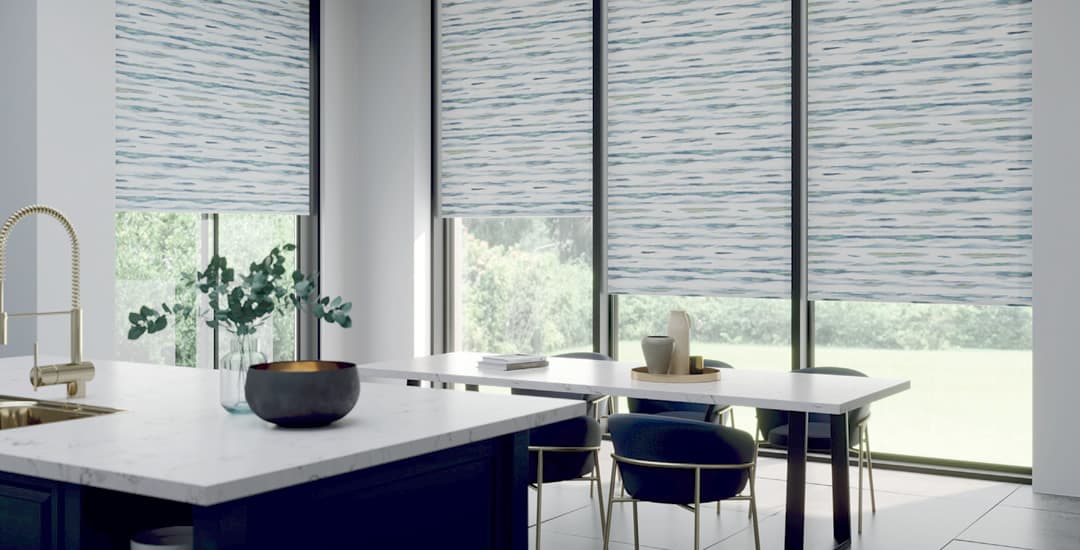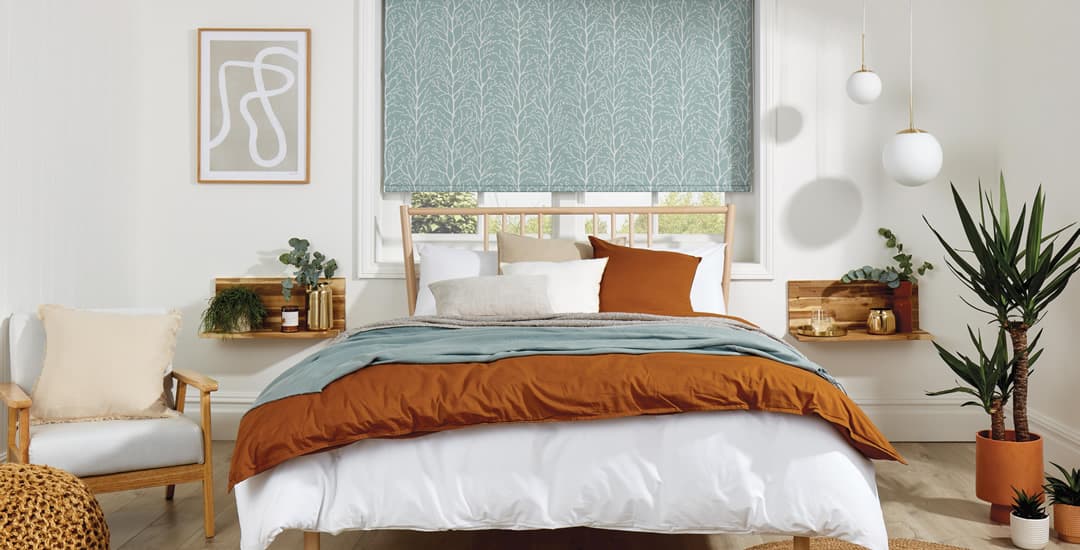
Roller blinds are the most popular type of window blinds overall, and they’re definitely the type of blinds that give you the largest number of options in terms of finishes, colours, and patterns.
But what fabric is best for roller blinds? This might depend on the room they’re intended to be used in, or what you want them to do. For wet or humid rooms, waterproof roller blind fabrics are a must, while for bedrooms, you may want to choose blackout fabrics instead.
This blog post will talk about what fabrics are suitable for roller blinds intended for different types of applications, and share some pointers on what you need to bear in mind when making your selections.
What fabrics are suitable for roller blinds?
Roller blinds are almost always made of one of three different materials; these are polyester, PVC, and vinyl respectively.
Less commonly, roller blinds might be made from a polycotton blend; usually 80% polyester and 20% cotton. These tend to be more costly than polyester roller blinds, and there is a level of crossover here between these being marketed as supposedly “higher end” roller blinds, and lower-end ranges of Roman blinds.
Polyester, vinyl, and PVC roller blinds are all very consistent in terms of demand, and none of these fabrics are innately better than any of the others in and of themselves; what fabrics are suitable for roller blinds varies depending on the environment they will be used in.
However, polycotton roller blinds don’t tend to be hugely popular (we removed them from our catalogues some years back due to lack of demand for them) as there are some disadvantages to throwing cotton into the fabric mix, and no real advantages that can’t be achieved with Roman blinds instead, this latter having a rather more prestigious finish.
What fabric is best for roller blinds in kitchens and bathrooms?
If you’re trying to decide on the best fabric for roller blinds that you plan to hang in a kitchen or bathroom, you need to pick from either PVC or vinyl. Both of these materials are waterproof, and so suitable for use in rooms that are apt to get humid or damp, or even result in the blind coming into direct contact with water.
The added advantage with PVC and vinyl roller blinds for kitchens is that when they do inevitably build up a light film of cooking grease, they can just be wiped clean with ease too.
Polyester roller blinds are generally a no-no for bathrooms or kitchens as polyester is not waterproof, and a polyester blind will soon begin to succumb to damp, mould, and mildew if used in humid or wet rooms.
Which fabric is best for roller blinds in bedrooms?

You can choose polyester, PVC, or vinyl roller blinds for bedrooms, so all of the options are on the table here; but you might also want to think about getting roller blinds with a blackout lining fabric for use in the room you sleep in too.
Blackout roller blinds for bedrooms aren’t a must-have for everyone; not everyone likes to sleep in the pitch dark, and some people find that waking up with no natural indicator of what time it is can be disorienting.
Overall though, blackout roller blinds are very popular for bedrooms and so this is something to factor in if you find that the sun tends to wake you up before you’re ready.
For reference, roller blinds that aren’t made of blackout fabrics or that come without blackout linings are called dimout blinds or dimout fabrics. How much sun these let in can be variable; thicker or better-quality ones will keep a room very dim/borderline dark, and may be perfectly fine even for people who aren’t fans of bright sun in the morning.
What fabric is best for roller blinds to insulate a window?
All blinds insulate the window they’re hung on to an extent; but you can increase the impact of this by choosing blinds with a special thermally insulating lining or coating.
For roller blinds, thermally insulating linings are also usually blackout linings, but do double-check this first as there will be the odd exception to the rule.
What fabric is best for roller blinds to match a room’s theme or style?
As I mentioned in the intro, the number of colours, patterns, designs, finishes, and even textures that roller blinds can be made in far outstrips the options available for any other type of blind on the market.
This means that finding a roller blind to suit any design ethos, theme, or finish won’t be hard.
Roller blinds come in plain single-coloured fabrics, every type of colour combo or pattern you can think of, and thousands of themes and designs; we’ve got a number of designer fabric roller blinds in our own range, and large collections of themed roller blinds for children’s bedrooms too.
Even the finish of the fabric of roller blinds can vary too; some have a flat, matte appearance, others a soft sheen, some a gloss finish, and there are textured options available as well.
If you’re looking for something specific or just want a second opinion on whether or not a certain roller blind fabric will be suitable for the room you want to use it in, drop me a line and I’ll try to help.




